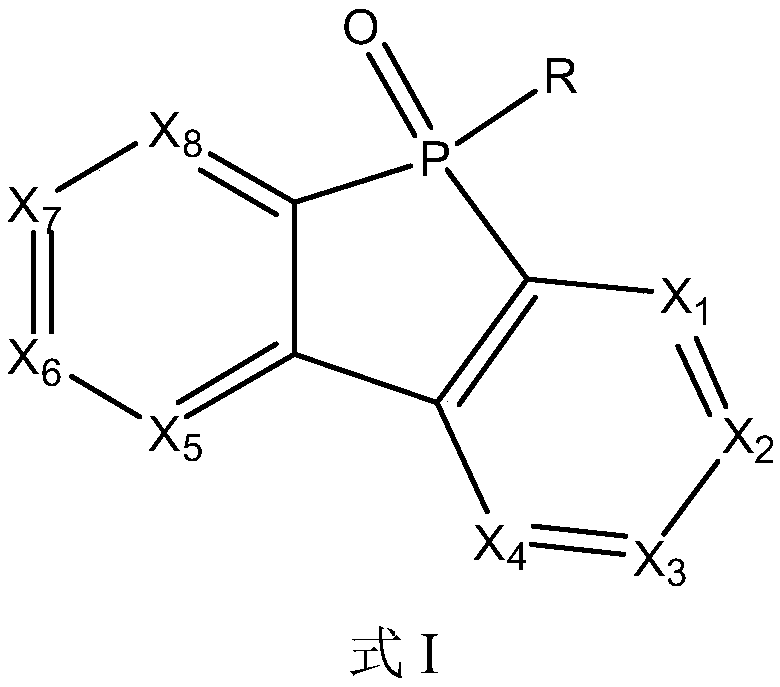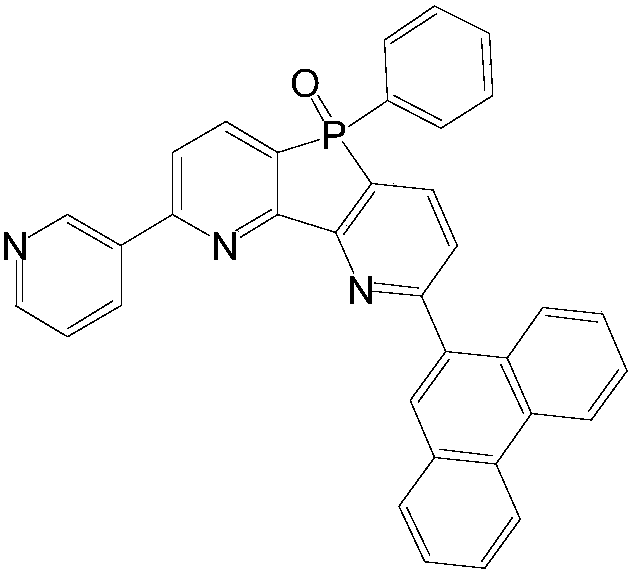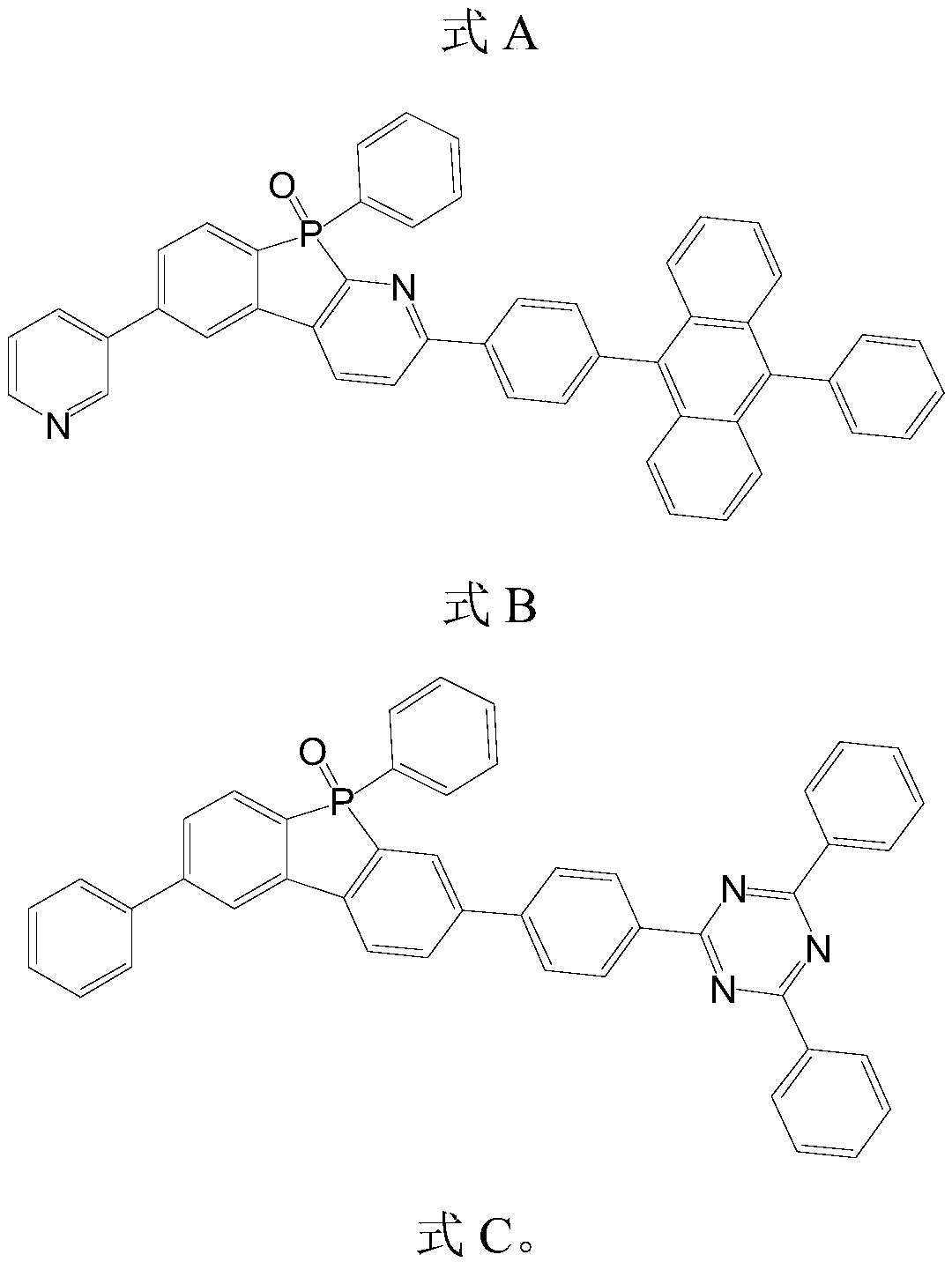Organic light-emitting material and OLED device comprising same
A light-emitting material, organic technology, applied in the direction of light-emitting materials, organic chemistry, electric solid devices, etc., can solve problems such as insufficient development
- Summary
- Abstract
- Description
- Claims
- Application Information
AI Technical Summary
Problems solved by technology
Method used
Image
Examples
Embodiment 1
[0087] In this example, compound 1 was prepared by the following method, and the preparation route is as follows:
[0088]
[0089] Compound 1-1 (62.5g, 233.4mmol) was placed in phosphorus trichloride (30.5ml, 350.1mmol), and the compound was heated at 220°C for 3h. Heating was stopped and extracted with tetrahydrofuran, the resulting solid was dissolved in ethanol (600ml) and heated to 80°C, then 10% aqueous potassium hydroxide solution (200ml) was added dropwise to the solution. Then the obtained solid was filtered, recrystallized three times from toluene, and finally purified by sublimation to obtain compound 1-2. Compound 1-2 (26.1g, 83.3mmol), bromobenzene (8.7g, 83.3mmol), cesium carbonate (54.3g, 166.6mmol) and dichloro(1,3-bis(diphenylphosphino)propane) Nickel (4.5 g, 8.3 mmol) was placed in dioxane, and the mixture was refluxed for 1 h. After the reaction was completed, a solid obtained by vacuum distillation of the resultant was extracted with chloroform and wat...
Embodiment 2
[0093] In this example, the preparation method of compound 2 is the same as that of compound 1, the only difference is that its preparation raw materials are different (compounds 2-1 and 2-5 are used as raw materials), and compound 2 can be obtained after final sublimation and purification (yield 81% ), the specific synthetic route is as follows:
[0094]
[0095] Characterization data of compound 2:
[0096] Tg(DSC) 141°C, purity 99.9%; 1 H NMR (400MHz, CDCl 3 )δ (ppm): 8.81 (s, 1H), 8.55 (d, 1H), 8.05 (d, 2H), 7.97 (d, 1H), 7.91 (d, 4H), 7.70 (m, 2H), 7.60 ( d,1H),7.57(d,2H),7.48(d,2H),7.44(m,1H),7.40(d,2H),7.39(m,4H),7.32(m,2H),7.30(m ,5H), 7.22(m,1H).
Embodiment 3
[0098] In this example, the preparation method of compound 3 is the same as that of compound 1, the difference is only that the raw materials for its preparation are different (compounds 3-1 and 3-6 are used as raw materials), and finally compound 3 can be obtained after sublimation and purification (yield 89% ), the specific synthetic route is as follows.
[0099]
[0100] Characterization data of compound 3:
[0101] Tg(DSC) 148°C, purity 99.9%; 1 H NMR (400MHz, CDCl 3 )δ(ppm): 7.70(s,1H),7.54(d,4H),7.50(m,3H),7.48(d,6H),7.40(d,2H),7.32(m,6H),7.30( m,5H), 7.22(m,3H).
PUM
| Property | Measurement | Unit |
|---|---|---|
| Thickness | aaaaa | aaaaa |
| Thickness | aaaaa | aaaaa |
Abstract
Description
Claims
Application Information
 Login to View More
Login to View More - R&D
- Intellectual Property
- Life Sciences
- Materials
- Tech Scout
- Unparalleled Data Quality
- Higher Quality Content
- 60% Fewer Hallucinations
Browse by: Latest US Patents, China's latest patents, Technical Efficacy Thesaurus, Application Domain, Technology Topic, Popular Technical Reports.
© 2025 PatSnap. All rights reserved.Legal|Privacy policy|Modern Slavery Act Transparency Statement|Sitemap|About US| Contact US: help@patsnap.com



